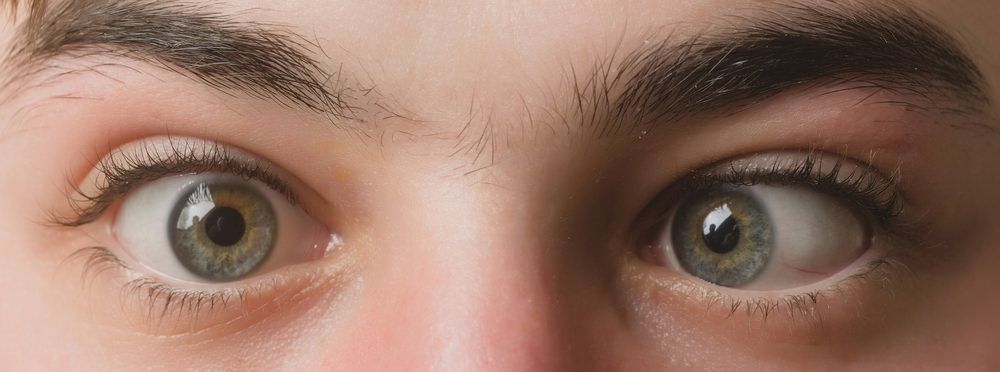First of all, “lazy eye” is kind of an older term. Most newer doctors are slowly phasing it out, and prefer to diagnose it as one of two things: Strabismus or Amblyopia. Today, I’ll be talking about these and how they are related to what most people know as a lazy eye.


Strabismus
Let’s tackle Strabismus first. This is when the eyes turn involuntarily. It can be one eye, alternating eyes, or even both at once, either inward or outward. There are a few different reasons for this. First, the brain can decide it prefers one eye over the other, and point the non-dominant eye in or out in order to focus with the dominant eye. Second, if one eye needs a higher corrective prescription, it may become the “lazy eye” as the brain prefers to use the images it’s getting from the eye with better natural vision. Third, if both eyes need a high plus prescription, meaning the patient is extremely far-sighted, they can end up crossing when trying to focus on something up close. You can see what I mean by holding your finger in between your eyes and trying to focus on it.
Amblyopia
Amblyopia can be described as one eye seeing a pixelated image. Similarly to Strabismus, the brain can decide it doesn’t like one eye, and therefore stop using it. As the non-dominant eye is used less, it becomes even weaker and eventually becomes the “lazy eye.” Essentially, Amblyopia can become Strabismus, which can become a lazy eye.
Treatment
More often than not, corrective lenses (glasses or contacts) will treat these issues on their own. When the non-dominant eye’s vision is corrected, the brain begins to use it again. As the patient wears the lenses longer, their lazy eye will begin to align.
When corrective lenses don’t solve the problem, we begin what’s called vision therapy. In the early stages of vision therapy, the patient will wear a patch over their dominant eye, therefore forcing the brain to use the other eye. When this doesn’t work, or when it simply causes the patched eye to turn in or out, we can place a red lens over one eye and a blue lens over the other. Similar to early versions of 3D glasses, this forces both eyes to work together to see a red and blue composite image.
Aniseikonia
As previously stated, a common cause of lazy eyes is a large difference in each eye’s prescription. We refer to this as Aniseikonia. It usually becomes a large issue when the difference reaches 3 or more diopters. This can cause each eye to receive images as drastically different sizes, causing the brain to ignore one of them. Luckily, this is usually a simple fix.
When we wear glasses, the corrective lenses sit a few millimeters away from our eyes. If you hold your glasses and move them toward and away from your face, you’ll notice the objects you see through them growing and shrinking. Because contact lenses sit directly on our eyes, this doesn’t happen. This gives us an advantage when treating patients for Aniseikonia, and potential lazy eyes.
